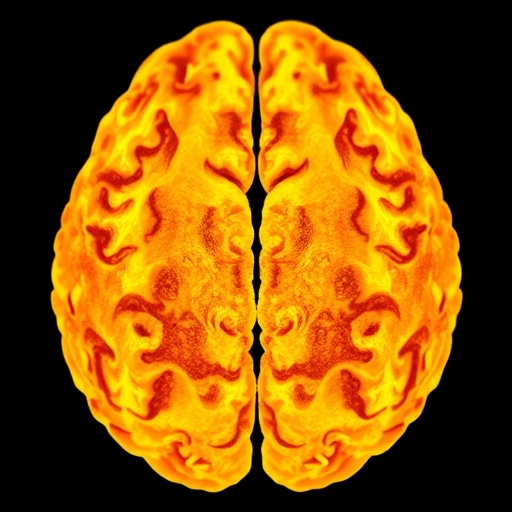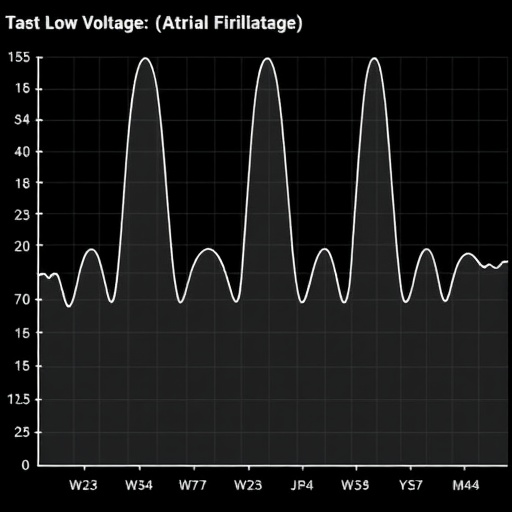In the growing field of targeted protein degradation, the development of proteolysis-targeting chimeras, or PROTACs, has brought forth an innovative approach to treat various diseases, including cancer. Traditionally, PROTACs are designed as bifunctional molecules designed to link a target protein, which is often implicated in disease pathology, with an E3 ligase that mediates protein degradation. However, recent advancements in chemical biology have propelled researchers to explore beyond the conventional bifunctional designs, leading to the inception of macrocyclic and trivalent PROTACs. These new designs have the potential to drastically improve the efficacy of protein degradation therapies by leveraging enhanced binding mechanisms and structural conformity.
The pivotal insight into the design of these novel PROTACs emerged from a co-crystal structure analysis of a known bivalent PROTAC, MZ1. This molecular complex revealed how the interaction between the ligands and their respective targets is mediated by spatial arrangements which can be manipulated to increase valency. By employing macrocyclic structures, researchers aim to attain a more rigid and defined bioactive conformation, which consequently enhances the overall stability and function of the PROTAC. On the other hand, the trivalent PROTACs take a different approach, focusing on increasing the avidity and cooperativity of the PROTAC ternary complex by augmenting the number of binding sites available for the target protein.
The synthesis of these innovative PROTACs, dubbed macroPROTAC-1 and SIM1, follows a rigorous, step-by-step botanical approach. Researchers outline a well-planned synthetic pathway that not only details the generation of the macrocyclic and trivalent cores but also explores the precise conjugation methods to their respective ligands. This elaborate synthesis procedure emphasizes the necessity of maintaining precise control over the molecular architecture to ensure functional integrity.
The synthesis of macroPROTAC-1 is anticipated to be a 14-day endeavor, while the construction of SIM1 is predicted to take around 10 days. This meticulous timeframe underscores the complexity of the processes involved in creating these compounds, showcasing the advanced techniques that underpin modern chemistry. As researchers embark on this journey, they are met with numerous challenges that test their knowledge of organic chemistry, reaction mechanisms, and biophysical methods for characterizing the resulting molecules.
In addition to the synthesis, an integral aspect of the development process involves the biophysical and cellular evaluation of these next-generation PROTACs. This includes assessing how well each compound binds to its target and E3 ligase, as well as testing their efficacy in promoting protein degradation in living cells. Such evaluations are fundamental, as they provide crucial insights into the practicality and therapeutic potential of these molecules. Preliminary results suggest that the macrocyclic and trivalent designs confer advantages over traditional PROTACs, indicating improved specificity and reduced off-target effects.
Moreover, by employing rigorous negative control compounds, researchers can better assess the performance of macroPROTAC-1 and SIM1. These controls serve as benchmarks, illuminating the distinct advantages of the new designs and providing a comparative analysis that is essential for validating scientific rigor. This methodical approach exemplifies how innovative research can redefine existing boundaries in drug design and development, opening doors for effective therapeutic strategies against previously difficult-to-treat diseases.
The findings stemming from these proof-of-concept studies demonstrate not only the viability of more complex molecular constructs but also their potential to address unmet medical needs in various therapeutic areas. The rapid expansion of the PROTAC platform underscores a shift in chemical biology, encouraging novel explorations in ligand development, connectivity, and stability. As current studies evolve, it becomes increasingly clear that expanding beyond traditional approaches is essential for harnessing the full power of targeted protein degradation.
As the research community continues to delve into the synthesis and application of macrocyclic and trivalent PROTACs, the implications extend far beyond cancer treatment. Future applications may emerge across various other diseases, including neurodegenerative conditions and autoimmune disorders, as scientists better understand the intricacies of protein interactions and degradation pathways. The evolution of PROTAC technology promises a transformative legacy in the realm of medicinal chemistry that could lead to breakthroughs in our quest for precision medicine.
Innovations like macroPROTAC-1 and SIM1 exemplify how creativity in chemical design is unlocking new potentials. This journey of discovery integrates traditional synthetic methodologies with cutting-edge biophysical techniques, fostering an environment ripe for innovation. As researchers remain committed to pushing the boundaries of what is possible, the realm of targeted protein degradation stands on the cusp of a new era—one marked by comprehensive therapeutic options and improved quality of life for patients facing formidable health challenges.
Ultimately, the future of PROTAC research is not just about refining compounds but also about understanding the underlying mechanisms that will aid in creating next-generation therapies. As new discoveries emerge, they will not only enrich the scientific literature but will also pave the way for a more nuanced approach to drug design. The ongoing journey into the realm of macrocyclic and trivalent PROTACs will surely inspire future generations of scientists to challenge the status quo and explore the uncharted territories of biochemical innovation.
Technology-driven collaborations across academic and industry spheres will further amplify the efforts to translate these discoveries into therapeutic realities. The synthesis process of compounds like macroPROTAC-1 and SIM1 highlights the importance of interdisciplinary research, bringing together expertise in organic chemistry, structural biology, and pharmacology. This collaboration will likely accelerate the transition from concept to clinical application, ensuring that the potential of targeted protein degradation is fully realized in therapeutic settings.
As this pioneering research unfolds, it captures the spirit of modern scientific inquiry, emphasizing the importance of adaptability, creativity, and tenacity. In a landscape characterized by rapid advancement, the development of novel PROTACs presents a compelling case study in the convergence of science, innovation, and clinical need—ultimately illustrating how far we can go when science and creativity intersect.
In conclusion, the innovative approach to designing macrocyclic and trivalent PROTACs signifies a transformative advancement in therapeutic strategies. With a clear focus on synthetic methodology, structure-function relationships, and experimental validation, researchers are charting a promising course toward revolutionizing drug discovery and development. These efforts mark a decisive moment in the ongoing fight against disease, heralding a new age of precision therapy characterized by targeted actions and minimized side effects.
Through diligent research and collaborative efforts, the potential for macrocyclic and trivalent PROTACs to change the landscape of medicine is indeed on the horizon, promising not only to enhance our understanding of protein biology but also to improve patient outcomes in tangible, meaningful ways.
Subject of Research: Macrocyclic and Trivalent PROTACs
Article Title: Branching beyond bifunctional linkers: synthesis of macrocyclic and trivalent PROTACs
Article References:
Cao, Y., Harris, A.L. & Ciulli, A. Branching beyond bifunctional linkers: synthesis of macrocyclic and trivalent PROTACs.
Nat Protoc (2025). https://doi.org/10.1038/s41596-025-01283-0
Image Credits: AI Generated
DOI: https://doi.org/10.1038/s41596-025-01283-0
Keywords: PROTACs, Macrocyclic, Trivalent, Targeted Protein Degradation, Drug Development.
Tags: bifunctional molecules in medicinecancer treatment innovationschemical biology breakthroughsE3 ligase-mediated degradationenhanced binding mechanismsmacrocyclic PROTACsmolecular complex analysisPROTACs design advancementsprotein degradation therapiesproteolysis-targeting chimerastargeted protein degradationtrivalent PROTACs





